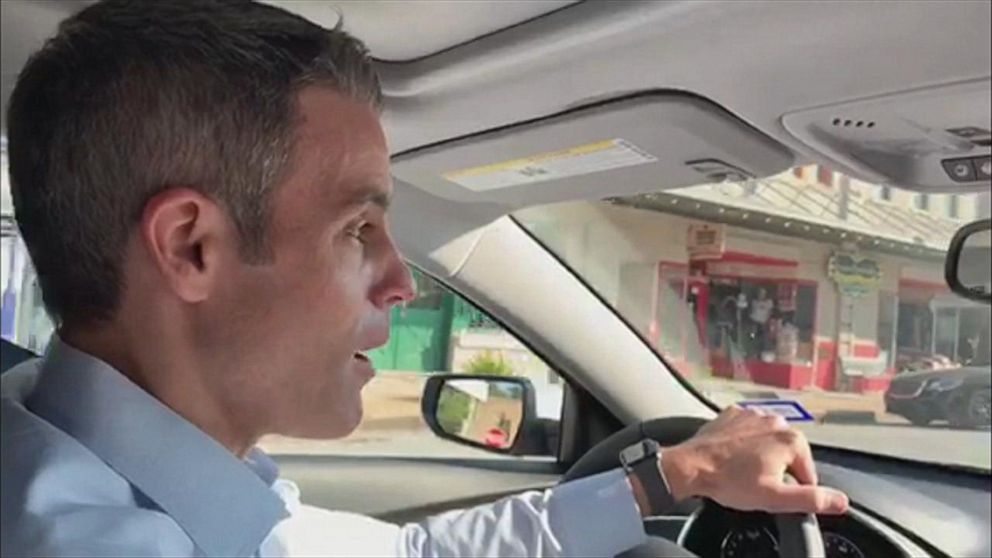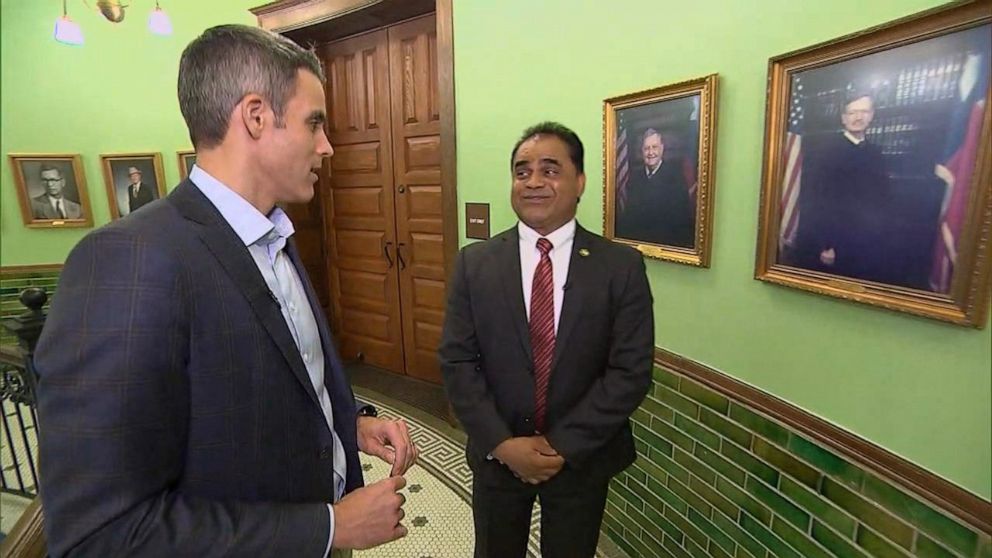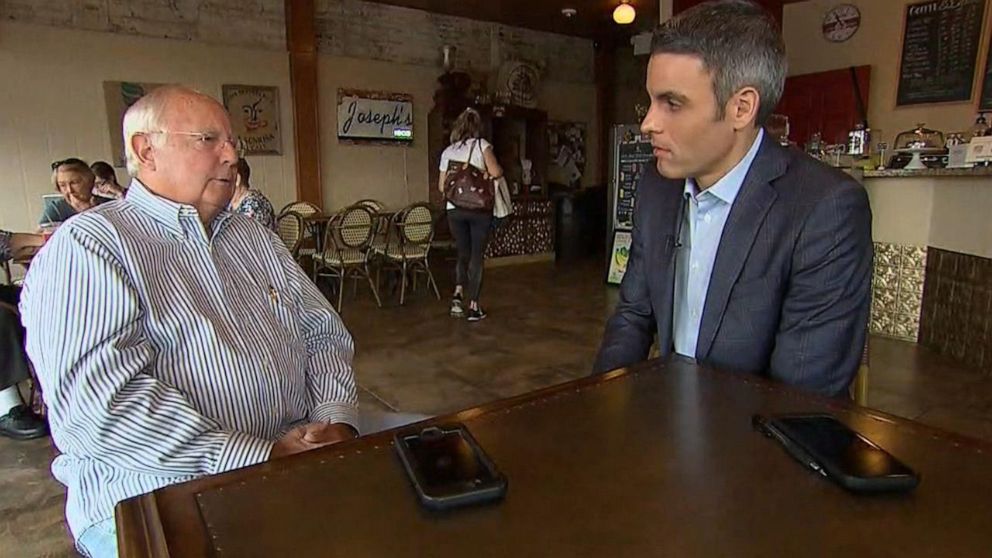Rapidly diversifying Texas raises Democrats’ hopes of turning the state blue
Democrats are looking to the state's suburbs for new voters.
FORT BEND COUNTY, TEXAS -- Thirty miles southwest of Houston -- the site of ABC's Democratic debate Thursday -- Texas Democrats are staging a coup.

Once a deep-red Republican bastion, Fort Bend County is rapidly turning purple -- breaking decades of GOP domination and lifting Democratic spirits for greater influence statewide.
In 2016, Fort Bend backed Hillary Clinton for president by a nearly seven-point margin -- the first Democrat to win the county since Lyndon Johnson. Last year, voters elected an Indian immigrant as county leader -- their first-ever nonwhite man and first Democrat in nearly thirty years.
Now, after a longtime Republican congressman from the area, who narrowly won reelection in 2018, recently announced plans to retire; his young Democratic rival is readying to make another run in 2020.

“It is a huge change happening,” said Fort Bend County Judge K.P. George, the Democratic executive. “I believe it is going to change the way people are looking at Texas, from outside.”
As Democrats converge on Houston for the third Democratic presidential primary debate Thursday night, many are looking to the Houston suburbs for clues on how Democrats can win in red states.
Fort Bend County is a microcosm of the shifting demographics that are scrambling American politics.
The community is roughly 33 percent white, 25 percent Hispanic, 20 percent African-American and 20 percent Asian, according to the most recent Census Bureau data. Approximately one-third of all residents are foreign born -- nearly double the percentage of foreign-born Texans statewide.
Stephen Klineberg, director of the Kinder Institute for Urban Research at Rice University, calls it one of the most diverse counties in the country. “One of the most consistent and consequential trends the surveys have recorded is the continuing improvements in support for immigration and the increasingly positive attitudes toward Houston’s diversity,” he writes in the 2019 Kinder Houston Area Survey.
It’s a far cry from the Texas district that former House Republican leader Rep. Tom DeLay represented. DeLay, nicknamed “The Hammer” for his hardline conservative views, was reelected eleven times, serving from 1985 until 2006, when he resigned in the face of a corruption scandal. He was never charged by the Justice Department, and in 2013, a Texas appeals court overturned a separate money-laundering conviction.
“We win by getting more people to come out to vote. More young people, more different communities; everybody involved,” said Sri Kulkarni, a former diplomat and Indian-American immigrant, who’s running as the Democratic candidate in DeLay's old district, which includes Fort Bend. “We used to have a very low voter turnout until 2018, but we had presidential level turnout last year and it's because people care now.”
Diversity does not automatically translate to Democratic votes, however. In 2018, Republicans won every statewide office in Texas for the 20th consecutive year. President Donald Trump remains highly popular here.

“It's been diverse, as far as I can tell. Since I've been here, I don't know if there's any change in demographics since I've been here in 20 years,” said Barry Beard, a Republican city commissioner in Richmond, part of Fort Bend County. “What's important to us is community and that we move forward and have an equal opportunity -- all things that you hope communities would embrace, as opposed to just arguing with each other.”
Republican strategists dismiss the idea that growing pockets of Lone Star Democrats will dramatically alter the state’s position as an electoral-vote anchor for Republicans in presidential years.
"Republicans are more concerned about Georgia than they are Texas in 2020 because of the senate races,” said pollster Frank Luntz. But by 2024, “if I’m a Republican in Texas, I’m watching the demographics and the numbers keep changing.”
It’s not just numbers. President Trump's rhetoric toward immigrants has weighed heavily on the immigrant communities in Texas, including those that have traditionally been inclined to support Republicans on policy issues.
“I had been voting conservative since I came here,” said Sam Nguyen, a retired Vietnamese-American who’s lived in Sugar Land, Texas, for 25 years. “But next year I don't even know.” He blamed a new feeling of not being included in the country -- and a departure from values of his Christian faith.
Democrats say they see an opening thanks to areas like the Houston suburbs, whose residents overwhelmingly backed former El Paso congressman Beto O’Rourke in 2018 in his race against Sen. Ted Cruz, and brought him within three points of unseating the red-state conservative leader.
“We’re discovering that just championing the policies that people want to see,” said Lina Hidalgo, the 28-year-old Harris County executive who is the first woman and first Latina to lead the largest county in Texas. “You talk about guns, for example; it’s clear the community wants government to be where the Democrats are. It's not about a party. It's not about ‘we're blue, you’re red.’ We're focusing on good policies before we focus on turning anything blue.”
Other local Democrats said the state hasn’t changed enough for their party to win here in 2020.
“We’re not going to be a blue state in 2020 but it will be a competitive state. It will be a purple state,” former Houston Mayor Annise Parker, now the CEO and president of the Victory Institute, a national organization that supports LGBTQ political and business leaders. (Parker was the first openly gay mayor of a major American city.)
“The reliably conservative Republican suburbs have begun to vote Democratic. It’s not that the Democrats are taking over, it’s that the Republican Party took too hard a turn to the right,” she said.
The suburban shift in Texas mirrors a trend happening around cities across the country in the Trump era, with Democrats performing increasingly well in suburbia as Republicans continue to maintain dominance in more rural areas.
“There should be no question that the changing demographics and voting trends we’ve seen in other previously reliably-red areas like Virginia, Arizona and the Mountain West are being felt in Texas as well,” Brian Walsh, a Republican strategist and former aide to Sen. John Cornyn, R-Texas, told ABC News. “The question is not ‘if’ but ‘when’ unless the GOP actively works to broaden its base instead of allowing nativist, anti-immigrant rhetoric to define itself.”
Cornyn, for one, is hoping to replicate his 2014 reelection campaign success, when he courted the state’s immigrant communities and ran ads in Vietnamese and Hindi.
“He takes nothing for granted and the strong position he’s in is reflected in the fact that a top tier challenger has yet to emerge against him. That being said, smart Republicans have read the tea leaves from 2018, recognize it’s going to take hard work and a lot of money to win in 2020 and you can’t simply rely on Texas’ historically-red voting trends to carry you over the finish line,” Walsh said in an email.




